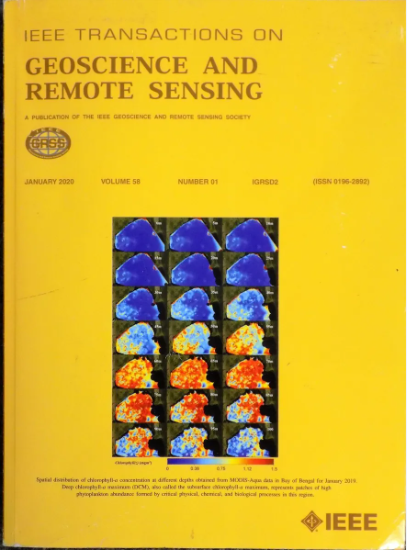MSRIP-Net: Addressing Interpretability and Accuracy Challenges in Aircraft Fine-Grained Recognition of Remote Sensing Images
IF 7.5
1区 地球科学
Q1 ENGINEERING, ELECTRICAL & ELECTRONIC
IEEE Transactions on Geoscience and Remote Sensing
Pub Date : 2024-09-11
DOI:10.1109/TGRS.2024.3458408
引用次数: 0
Abstract
The task of fine-grained aircraft recognition is crucial in the field of remote sensing. Despite some progress achieved by traditional deep learning methods in addressing this challenge, they are often perceived as a “black box,” lacking transparent explanations for model decisions. Current interpretable methods based on attention mechanisms, although providing some interpretability, do not align with human thought logic. Therefore, we propose a multiscale rotation-invariant prototype network (MSRIP-Net). Our approach simulates the intuitive reasoning process of humans in identifying objects by segmenting them into multiple components. Importantly, MSRIP-Net has the capability to automatically recognize rigid components on aircraft targets without relying on additional part annotations, using only image-level class labels. In addition, our approach effectively addresses challenges presented by noise, deformations, and multiscale variations in remote sensing targets and has been comprehensively evaluated on datasets FAIR1M1.0 and Rareplane. Our results demonstrate that MSRIP-Net achieves higher accuracy compared with existing fine-grained recognition methods. Furthermore, we provide insights into the model’s decision-making process to illustrate the interpretability of our approach.MSRIP-Net:应对飞机遥感图像精细识别中的可解释性和准确性挑战
细粒度飞行器识别任务在遥感领域至关重要。尽管传统的深度学习方法在应对这一挑战方面取得了一些进展,但它们往往被视为 "黑箱",缺乏对模型决策的透明解释。目前基于注意力机制的可解释方法虽然提供了一定的可解释性,但并不符合人类的思维逻辑。因此,我们提出了多尺度旋转不变原型网络(MSRIP-Net)。我们的方法通过将物体分割成多个组成部分,模拟了人类识别物体的直观推理过程。重要的是,MSRIP-Net 能够自动识别飞机目标上的刚性部件,而无需依赖额外的部件注释,只需使用图像级类标签。此外,我们的方法还能有效解决遥感目标中的噪声、变形和多尺度变化带来的挑战,并在 FAIR1M1.0 和 Rareplane 数据集上进行了全面评估。结果表明,与现有的细粒度识别方法相比,MSRIP-Net 实现了更高的精度。此外,我们还深入分析了模型的决策过程,以说明我们方法的可解释性。
本文章由计算机程序翻译,如有差异,请以英文原文为准。
求助全文
约1分钟内获得全文
求助全文
来源期刊

IEEE Transactions on Geoscience and Remote Sensing
工程技术-地球化学与地球物理
CiteScore
11.50
自引率
28.00%
发文量
1912
审稿时长
4.0 months
期刊介绍:
IEEE Transactions on Geoscience and Remote Sensing (TGRS) is a monthly publication that focuses on the theory, concepts, and techniques of science and engineering as applied to sensing the land, oceans, atmosphere, and space; and the processing, interpretation, and dissemination of this information.
 求助内容:
求助内容: 应助结果提醒方式:
应助结果提醒方式:


